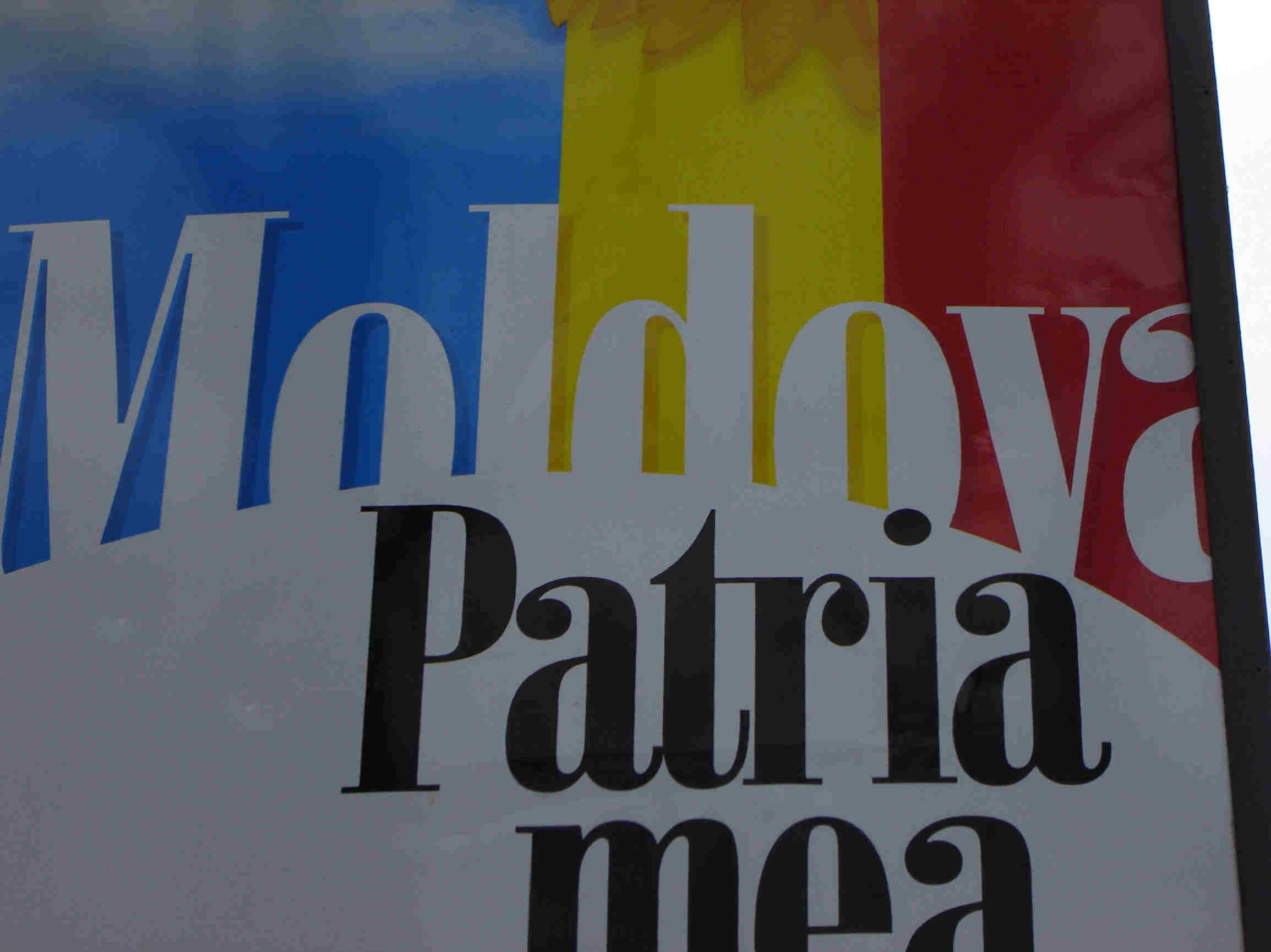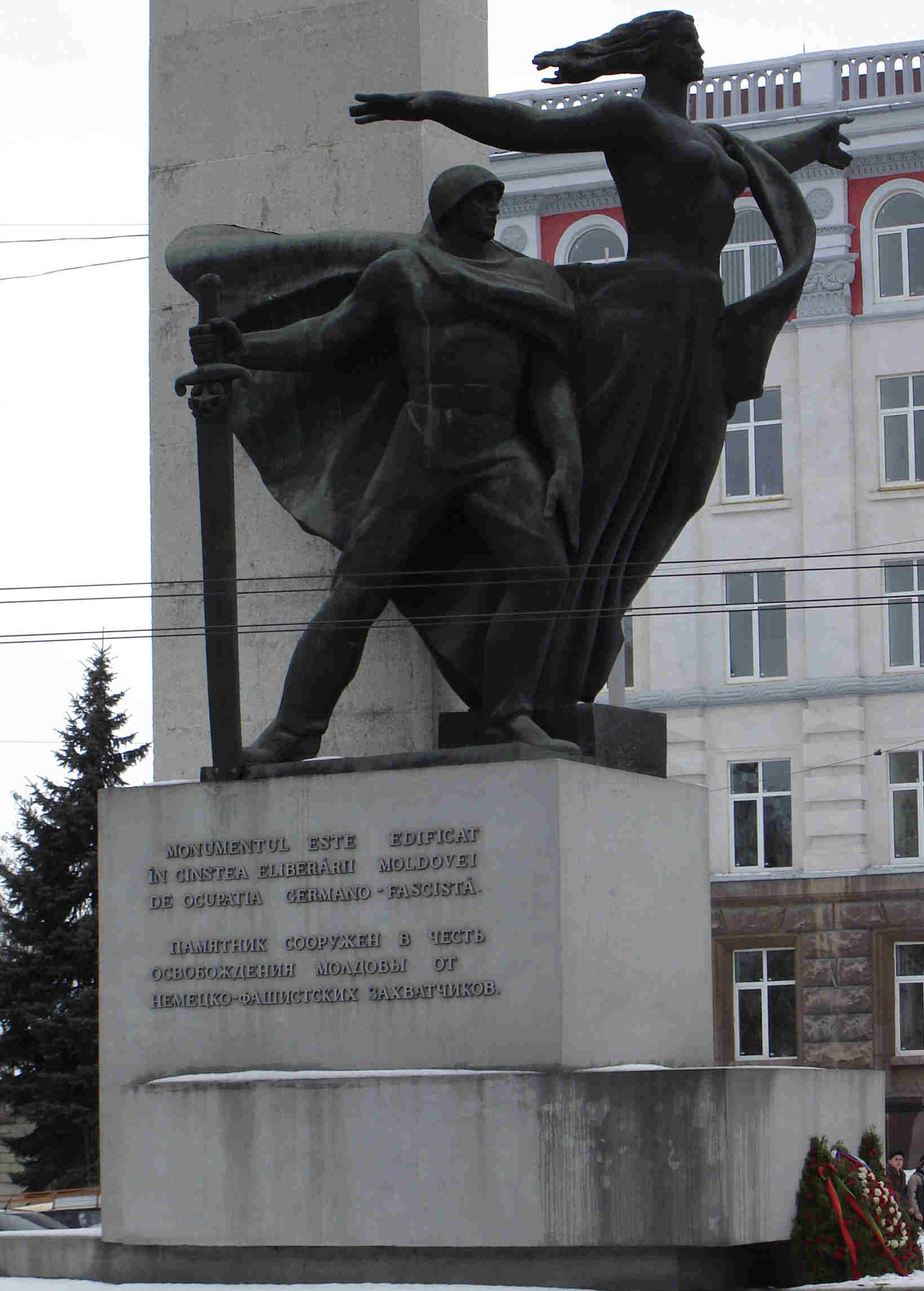 A statue in Chisinau honoring Mother Russia and the Soviet soldiers that
came to "liberate" Moldova in 1944.
A statue in Chisinau honoring Mother Russia and the Soviet soldiers that
came to "liberate" Moldova in 1944. 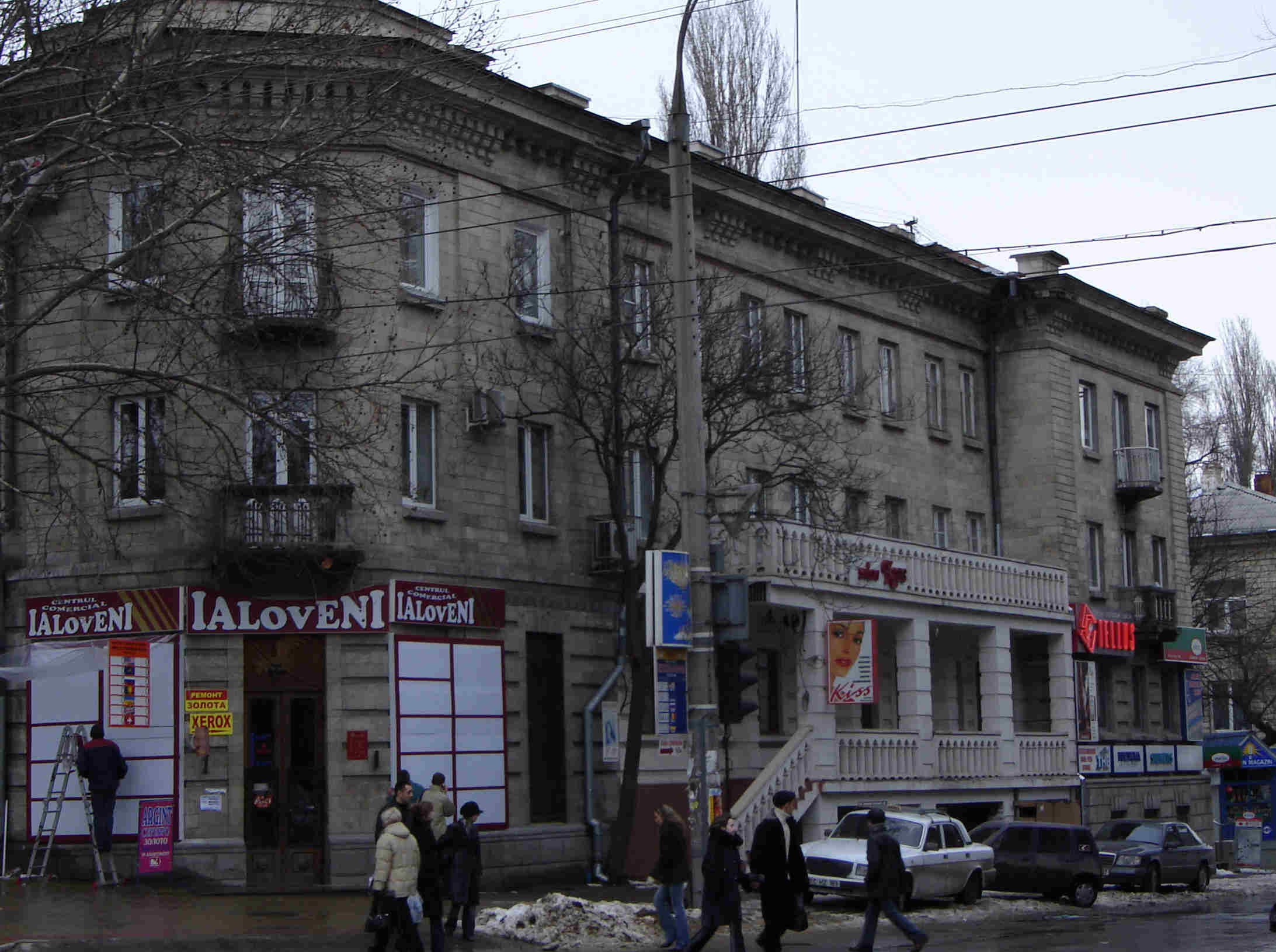 My "Stalin-ka." My apartment is on the top floor at the right of the
photo.
My "Stalin-ka." My apartment is on the top floor at the right of the
photo.
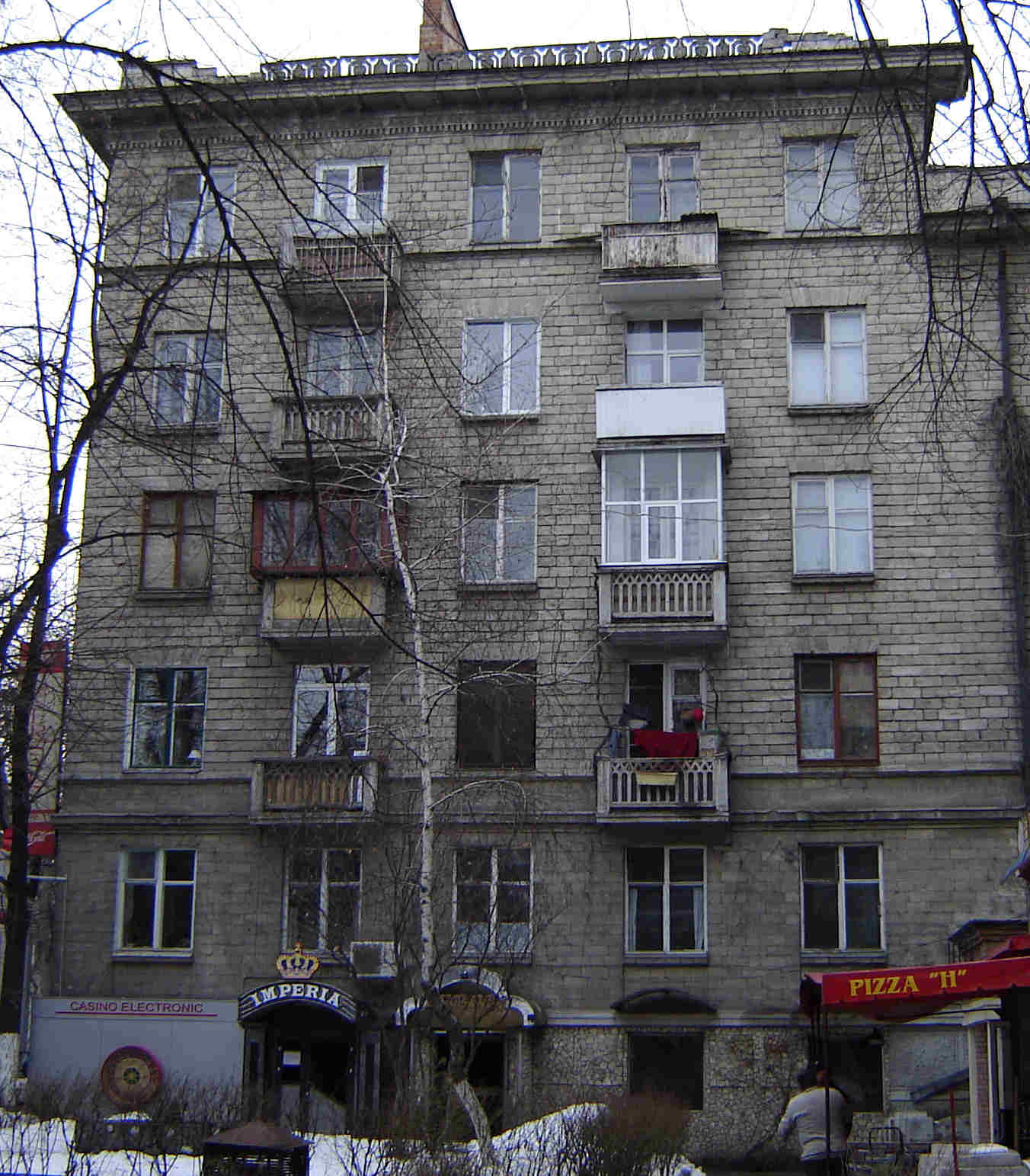 A "Khruschev-ka."
A "Khruschev-ka."
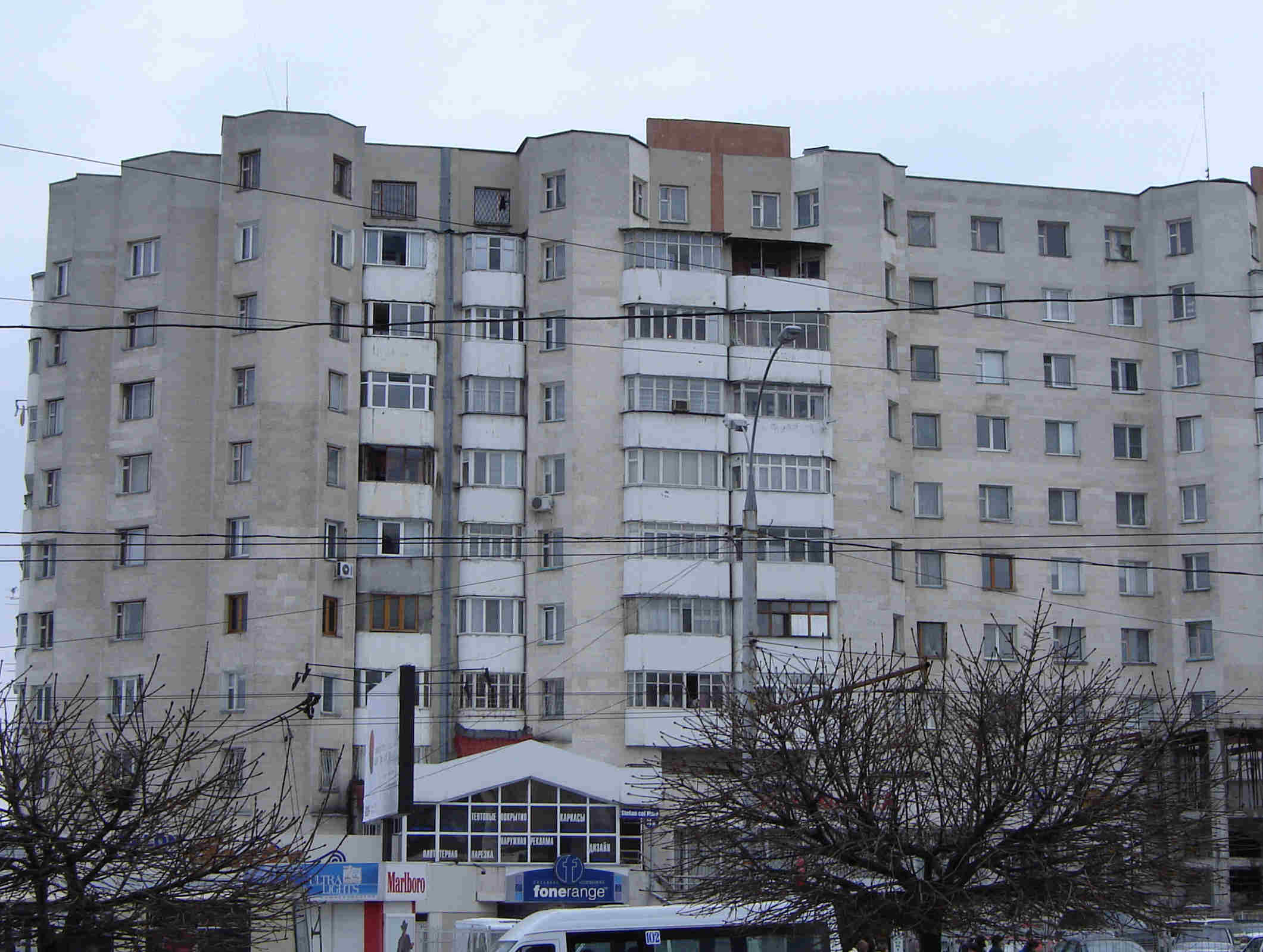 I call them "Breshnev-kas"
because these high-rises were built in the 1960s and 70s I call them "Breshnev-kas"
because these high-rises were built in the 1960s and 70s |
|
5 Mar...Even the Walls are Listening...Several
people have mentioned to me, the abundance of Soviet-style architecture in
my pictures from Chisinau. The entire city was destroyed in World
War II and the Soviets literally redesigned it and rebuilt it.
Remember that the Soviet Red Army ejected the Nazis from Moldova in 1944
and many here still see them as liberators. One of the best things that
happened because of the Soviet rebuilding was that parks (large and small)
were placed throughout the city and even the apartment blocks have large
areas of green space nearby. Even the "Gates of the City"--the
monstrous high rises apartment blocks at the edge of the city are
surrounded by parks and greenery.
On the down side, Soviet architects were never known for aesthetics in
their work--they were functionalists and their architectural was
influenced by political ideology as much as anything else. Soviet
regimes valued the concentration of population in cities and towns.
The taller the building, the more it was a triumph over capitalism.
There were two primary reasons for concentrating the populations in towns
and cities.
One, the Soviets were bent on industrialization and having populations
concentrated in urban centers. It made transport easier to the
factories. Major pushes toward industrialization were made in the
1930s and the 1950s. Fuel was dear in Soviet times (though today
large supplies have been discovered in parts of the former USSR).
Economically, it made sense to have people live near their jobs and in
later times the buildings were often produced in factories and "shipped"
to their final destinations.
Secondly, the Soviet Union was a "police state." This means the state
kept tabs on people's movements, conversations, and activities and having
citizens spread apart made it difficult to monitor their activities.
Marx wrote that for a period of time after the revolution there would need
to be a "dictatorship of the proletariat" during which the citizens would
be reeducated and be rid of their capitalist mentalities. Under
Josef Stalin (1924-53), this education took the form of complete
oppression from the state. Millions of Soviets were detained,
deported (usually to Siberia), or executed for remarks made against the
state, its leaders, or the Communist Party. Religion was repressed
as was free speech and other potential threats to the state and its
ideology.
Chisinau was redesigned and rebuilt during the Stalin and Khrushchev
regimes and many of the apartment buildings in the central area of the
city are still referred to as "Stalin-kas" or "Khrushchev-kas." A
"Stalin-ka," like the one I live in is ornate (neo-classical architecture)
and is usually only 3 or 4 stories tall. A "Khrushchev-ka" is taller
5 or 6 stories and less ornate (usually no elevators). In both
styles, the walls were thin so that you can hear what is going on in your
neighbor's apartment (thankfully mine was renovated). It was also
the case in the Stalin and Khrushchev eras that two or more families were
forced to share an apartment--meaning even less privacy.
In the 1970s with the state expanded housing and high-rises were built
around the outside of the city center. I have called these
"Brezhnev-kas" but no one here gets the humor in it--perhaps because
Brezhnev is not particularly well-regarded in Moldova. Leonid
Brezhnev was Soviet Premier (1964-82) and spent part of his early career
in Chisinau as the First Secretary of the MSSR Communist Party.
During Brezhnev's time here, he was responsible for the removal of as many
as 250,000 people from Moldova to other parts of the Soviet Union--he was
rewarded for his efforts by Stalin. Anyway, the 1970s era buildings
can be 15 stories or higher and have elevators (but they do not always
work well). They make up the bulk of the housing in the suburban
districts.
My friend, Irina Nicorich, sent me some Stalinist era propaganda
posters (check them out in the right column). What has amazed me on
all of my trips to Eastern Europe has been how extensive the repression
was under Communist governments and how resilient the people are.
Today Chisinau is charming in spite of some architectural blights with
music on the streets, young people in the parks, conversations in the
cafes, and the lively hustling and bustling of people on the move. |
|
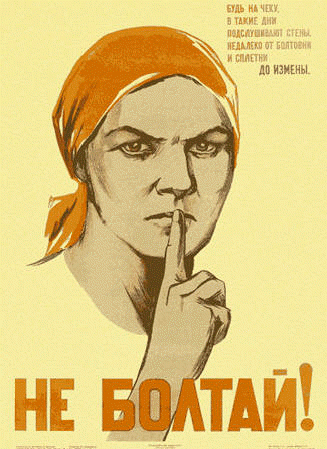 "DO NOT TALK!!
Beware, today even the WALLS ARE LISTENING! Blab and Gossip LEAD TO
TREASON."
"DO NOT TALK!!
Beware, today even the WALLS ARE LISTENING! Blab and Gossip LEAD TO
TREASON."
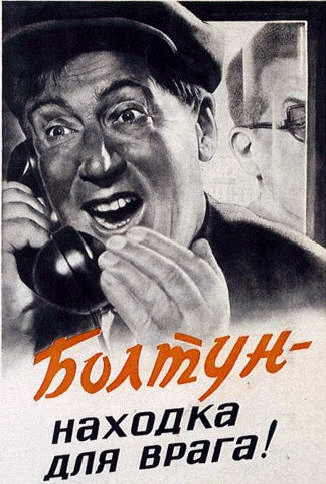 "An Idle Talker is a Godsend for the Enemy"
"An Idle Talker is a Godsend for the Enemy"
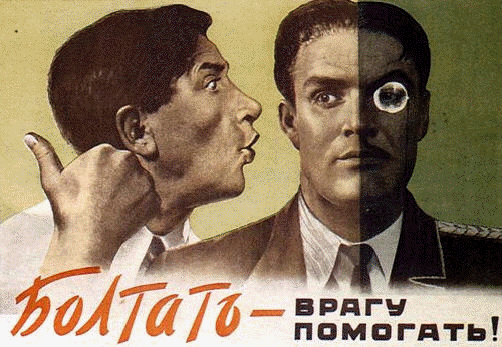 "TO TALK
MEANS TO HELP THE ENEMY" "TO TALK
MEANS TO HELP THE ENEMY"
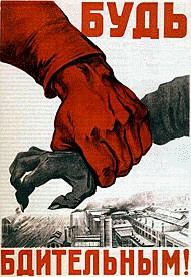 "BE ALERT"
"BE ALERT"
|
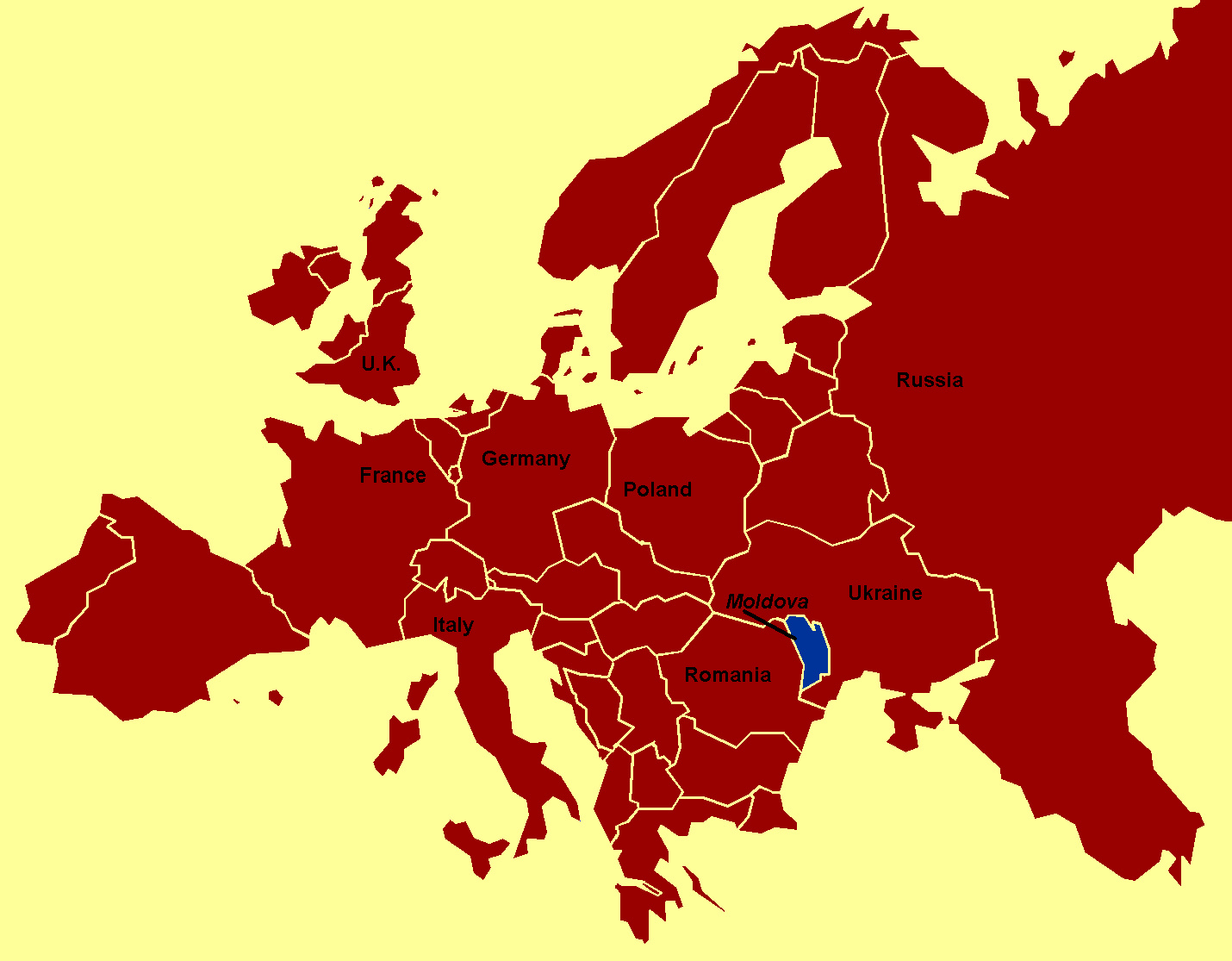
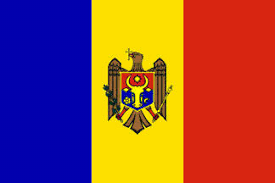
 A statue in Chisinau honoring Mother Russia and the Soviet soldiers that
came to "liberate" Moldova in 1944.
A statue in Chisinau honoring Mother Russia and the Soviet soldiers that
came to "liberate" Moldova in 1944. My "Stalin-ka." My apartment is on the top floor at the right of the
photo.
My "Stalin-ka." My apartment is on the top floor at the right of the
photo. A "Khruschev-ka."
A "Khruschev-ka." I call them "Breshnev-kas"
because these high-rises were built in the 1960s and 70s
I call them "Breshnev-kas"
because these high-rises were built in the 1960s and 70s "DO NOT TALK!!
Beware, today even the WALLS ARE LISTENING! Blab and Gossip LEAD TO
TREASON."
"DO NOT TALK!!
Beware, today even the WALLS ARE LISTENING! Blab and Gossip LEAD TO
TREASON." "An Idle Talker is a Godsend for the Enemy"
"An Idle Talker is a Godsend for the Enemy" "TO TALK
MEANS TO HELP THE ENEMY"
"TO TALK
MEANS TO HELP THE ENEMY" "BE ALERT"
"BE ALERT"